_We may earn revenue from the products available on this page and participate in affiliate programs. Learn more ›
_
Fifty years ago, camouflage clothing choices were so poor that many deer hunters didn’t even own camo. Now, however, walking through the camo section at a store or browsing online reveals so many choices that even veteran hunters can become mired in the selection. Fortunately, by asking yourself a handful of simple questions, you can quickly determine what camo clothing is right for you and your upcoming hunts. Here are 10 things to consider before buying your first set of deer hunting camo.
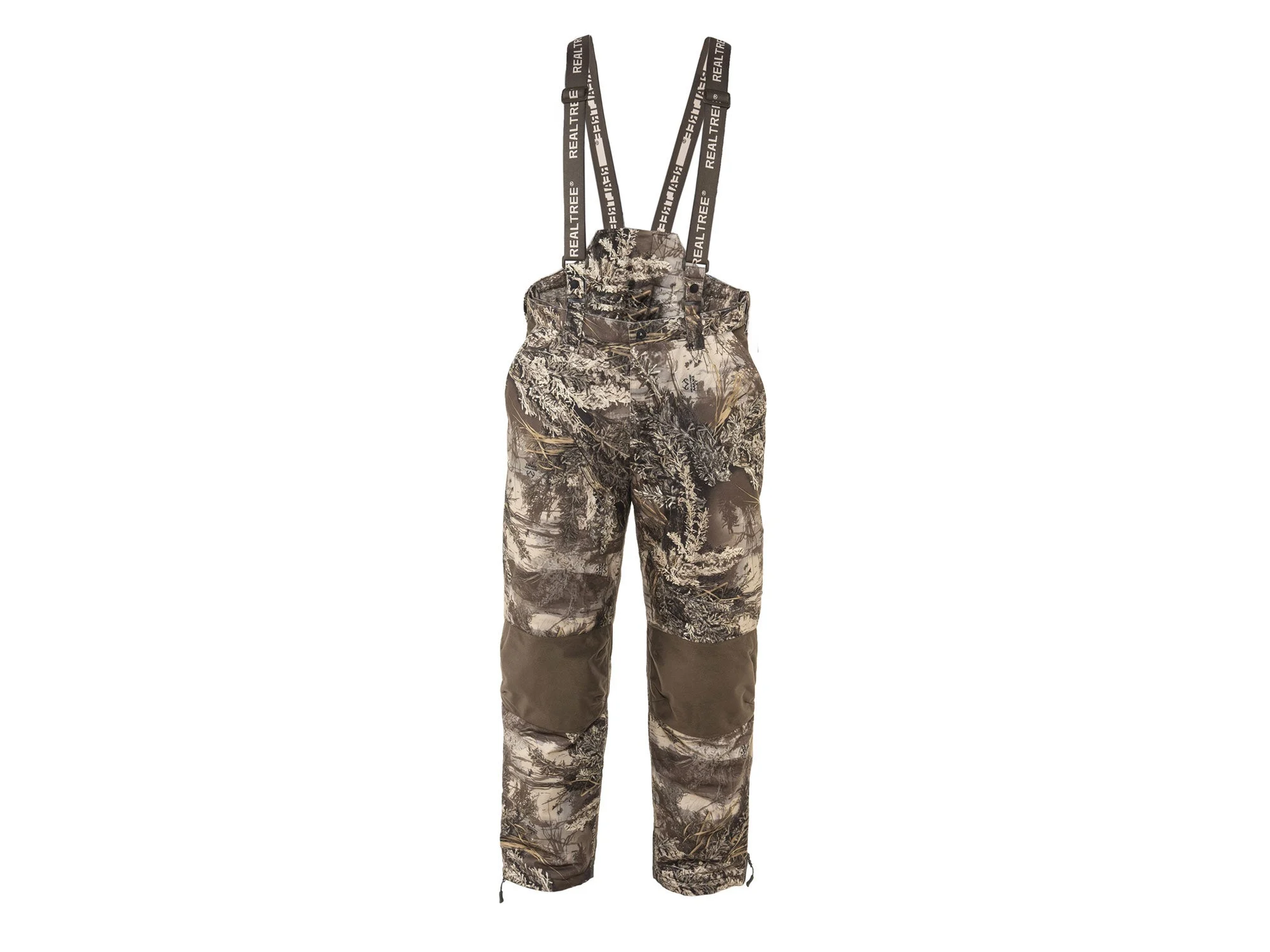
Camouflage insulated bib overalls like these are waterproof, breathable and, when paired with a good jacket, will keep you warm in the coldest of weather. Walmart
Matching your camo clothing
to the temperature where you will be hunting is one of the most important considerations. Just try hunting in insulated camouflage coveralls when it’s 80 degrees out and you’ll know why. If you’ll be doing most of your hunting in warm weather, you’ll need lightweight shirts and pants, and maybe even a light jacket. For very cold weather, you’ll need not only base layers on top and bottom, but a heavier shirt, pants and a warm, insulated jacket. Most hunters will need at least a couple sets of camo, since they’ll be hunting in fairly warm weather early in the season, then colder weather as the winter progresses.
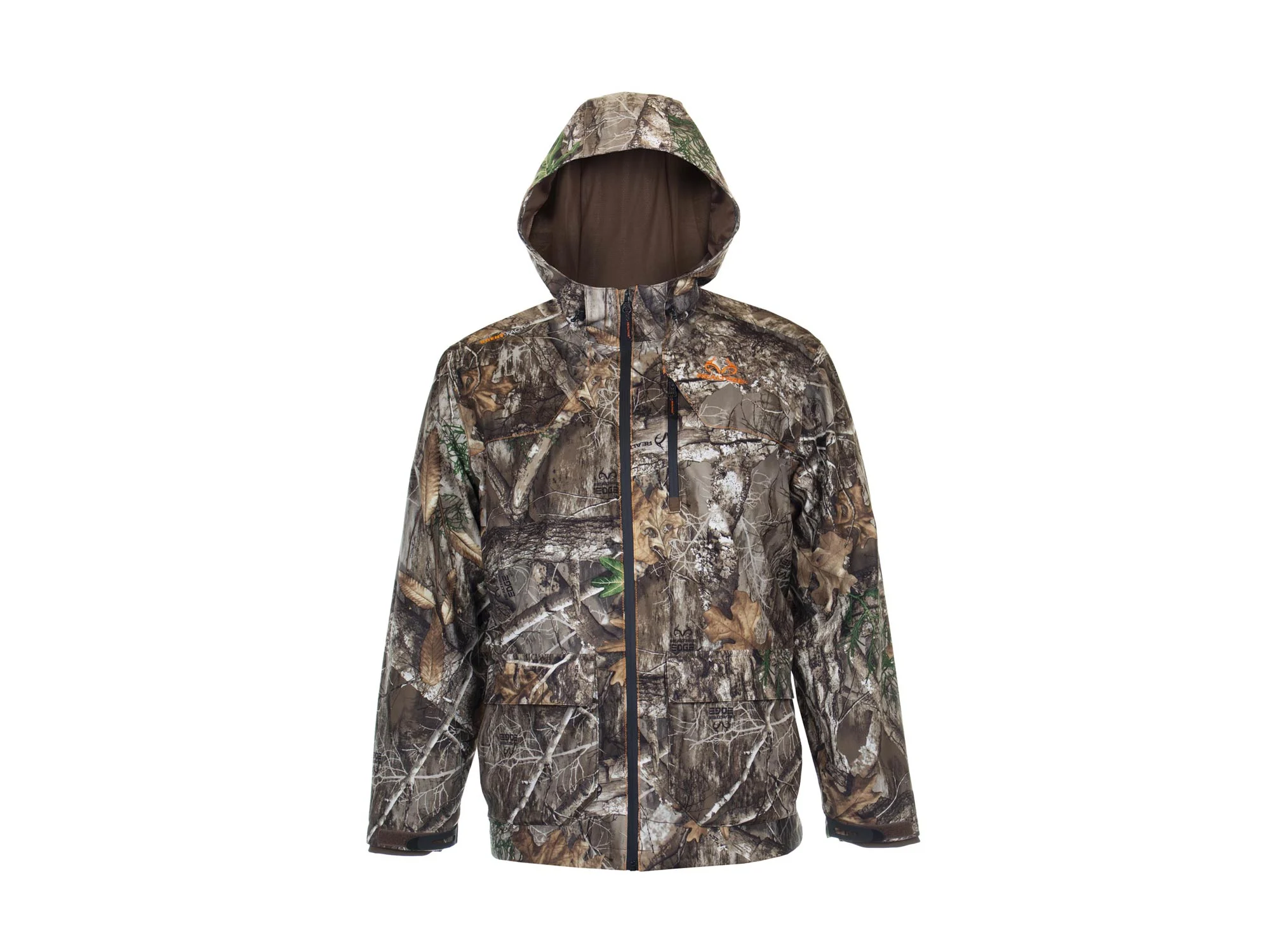
This hunting jacket in Realtree EDGE camouflage will help hunters blend in perfectly in fall and winter hardwoods. Walmart
Camouflage comes in many different patterns
invented by various manufacturers to mimic certain areas you will be hunting. The terrain or foliage where you hunt will largely determine the pattern that is best for you. If you’re hunting high in an oak tree, you’ll be more effective with a different pattern than if you plan to hunt the edge of a corn field or a cattail swamp. Likewise, hunting in pines requires a different pattern than when hunting in a hardwood grove. And if you plan to hunt from the ground, you’ll want to match the vegetation you’ll be trying to blend in with there. To make the best choice, determine where you’ll be doing most of your hunting and match your camo to the predominant terrain and foliage.
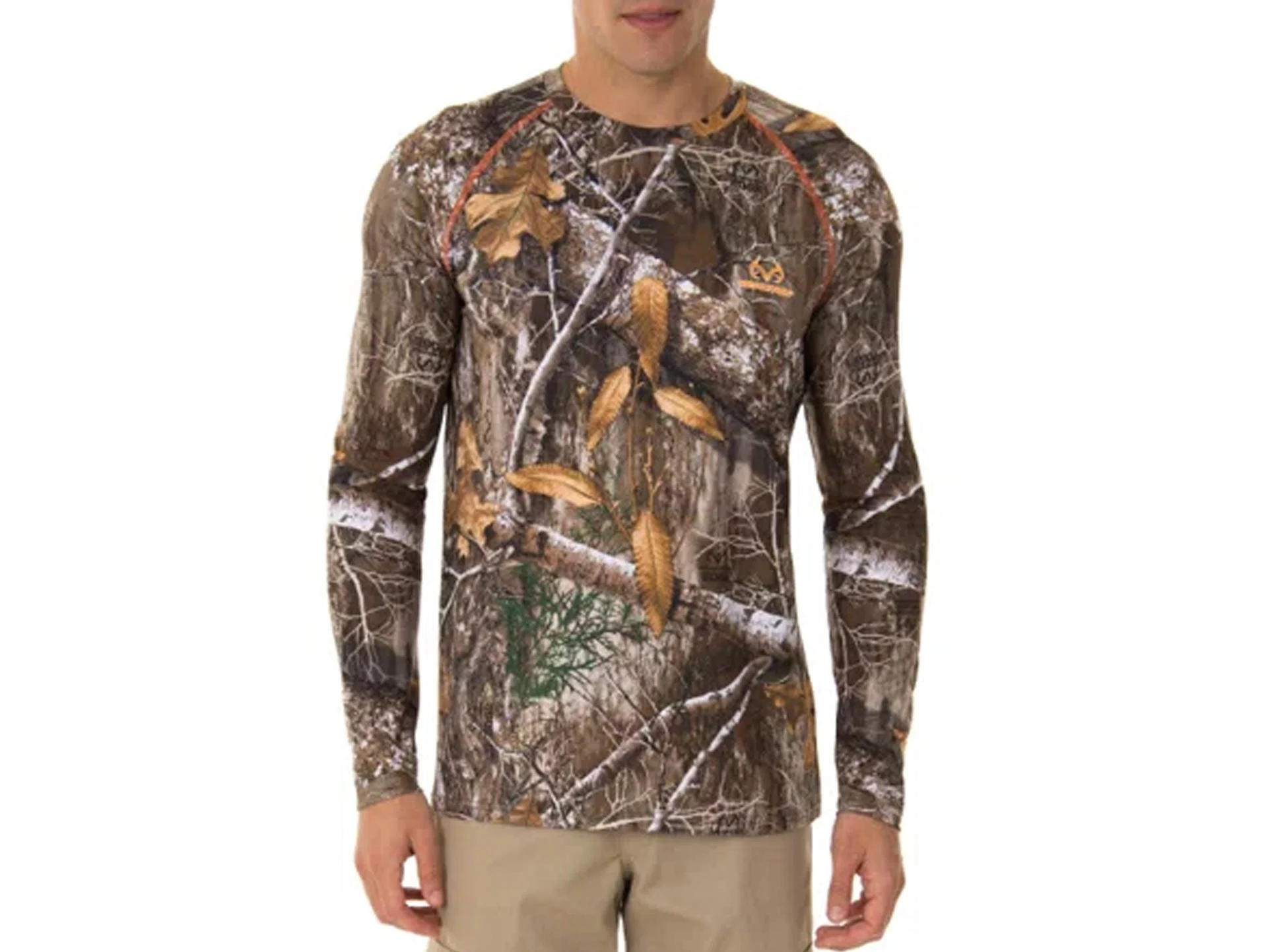
A long-sleeve camo T-shirt like this one will work as an undergarment or as your outer layer, depending on the weather.
A long-sleeve camo T-shirt like this one will work as an undergarment or as your outer layer, depending on the weather. Walmart
Layers are important for hunting in cool and cold weather, as layering allows you to wear just the right amount of clothing to stay warm. Camouflage layers are even better. Consider this scenario: You’re sitting in your archery stand in a tall oak tree near a location a big buck has been frequenting. Once the sun comes up, it starts getting warmer and warmer. You decide to shed a layer, only to realize your undergarment is a solid color with little chance to help you blend in to your backdrop. Your choice is either to take your chance at being spotted or leave your jacket on and be uncomfortably hot while hunting. To some, camo underlayers
seem silly. But they can make a big difference in a scenario like the one just mentioned.
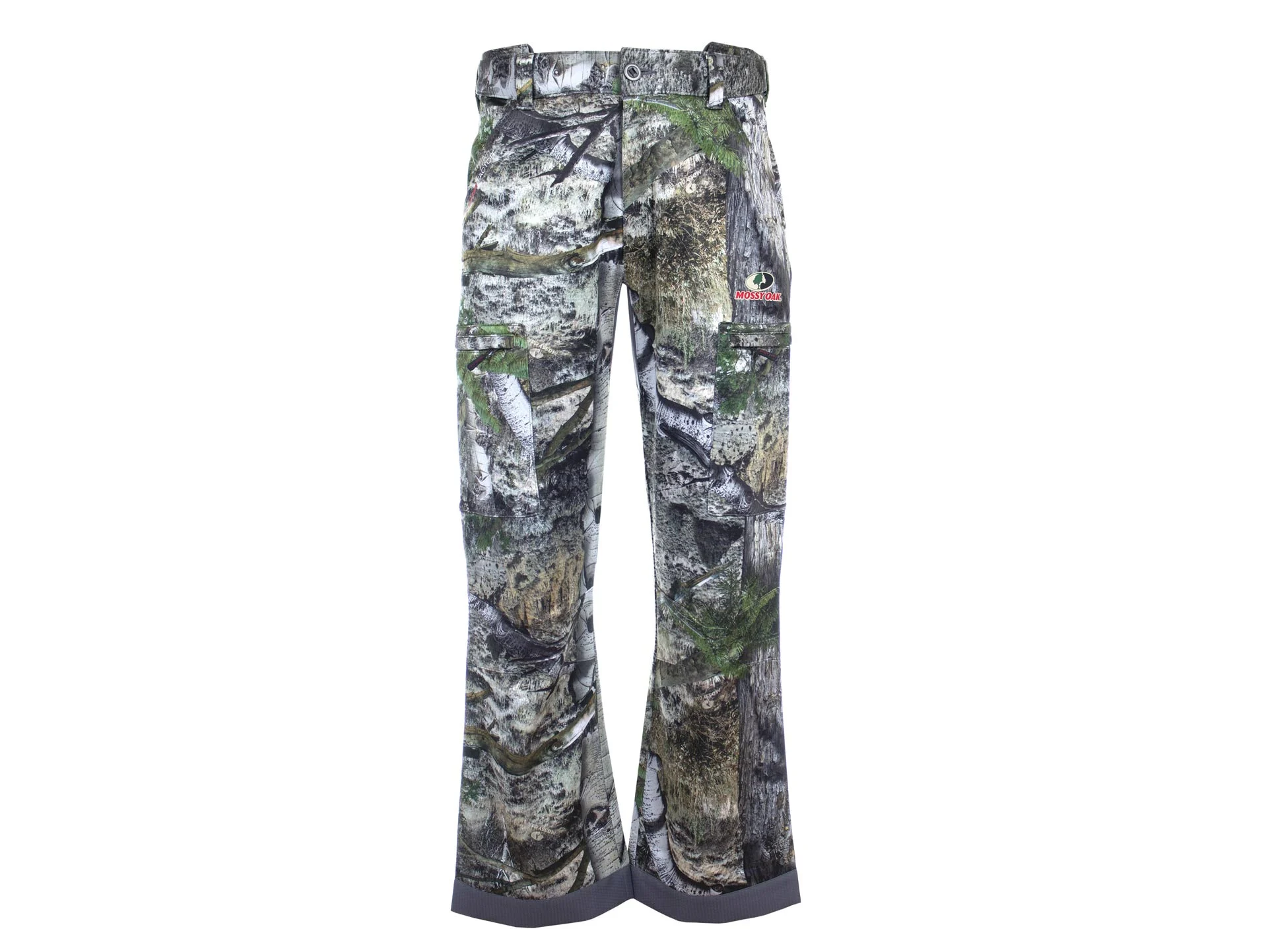
These pants, in Mossy Oak Mountain Country pattern, have a warm fleece interior and five pockets for storing snacks and gear. Walmart
While some hunters wear jeans or other solid-color lower garments when hunting, a good pair of camouflage pants
is really a must-have garment. This is especially true for serious bow and crossbow hunters since their quarry has to be close before a shot can be taken. Look for pants with a rugged exterior, since you’ll likely be walking through some pretty tough cover during your hunt. Also, make sure the pants you choose have plenty of handy pockets, since deer hunting requires a lot of gear and some of it needs to be readily accessible. Lastly, buy your camo hunting pants a little bit large so they’ll still fit well if you have to wear more than one layer underneath in colder weather.

This hunting jacket in Realtree EDGE pattern will keep you warm, dry and hidden, along with helping cover up your scent. Walmart
will probably be your most important piece of camo clothing. It will not only keep you warm when it is cold, but will disguise your torso—the largest continuous part of your body, which is easy to spot if covered with a solid color. Jackets with plenty of pockets to store ammunition, your rangefinder and other necessary gear are better than those with few pockets. And a jacket with a hood will come in handy when it is very cold or raining. Again, temperature when you are hunting and the terrain/cover you will be hunting in are important considerations in making a selection. As with other camo clothing, you’ll likely need more than one jacket if you want to match different areas and weather conditions.
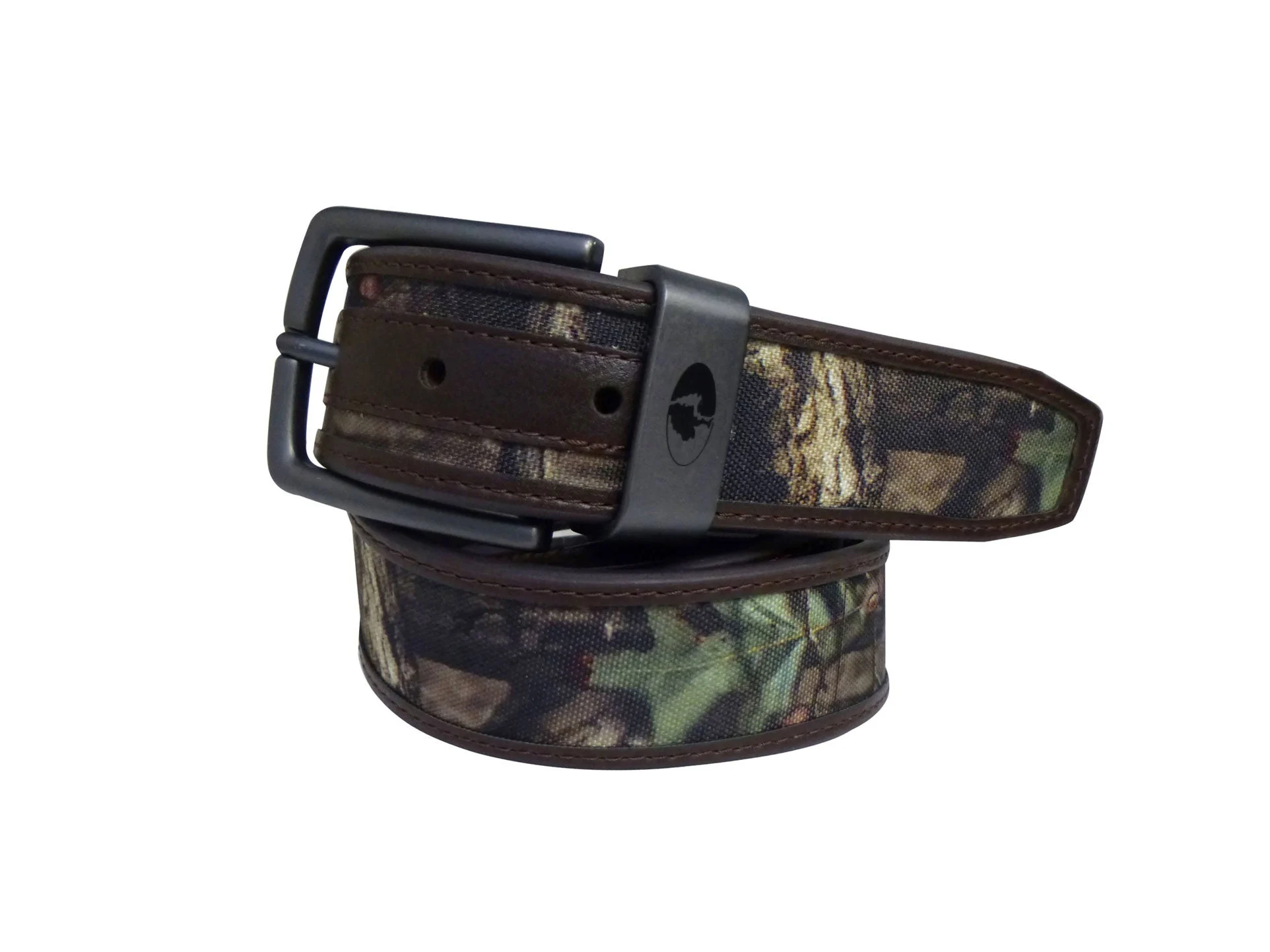
This reversible camo belt features two different camouflage patterns—Mossy Oak Country and Mossy Oak Bottomlands—and will also hold up your pants! Walmart
might sound frivolous to some hunters, but once you have worn one you’ll never hunt without it. Of course, a belt’s main job is to keep you pants up—a job that becomes more difficult when your pockets are stuffed full of gear and gadgets. Look for a sturdy, wide belt that is stiff enough to hold up to heavy wear but not so stiff that it isn’t comfortable. Also, make sure your camo belt has a matte finish buckle, as a polished buckle can cause a noticeable reflection. On that rare occasion when a deer takes a hard enough look at you to spot your shiny belt buckle and spooks to the next county, you’ll be wishing for a camo belt and matte finish buckle.
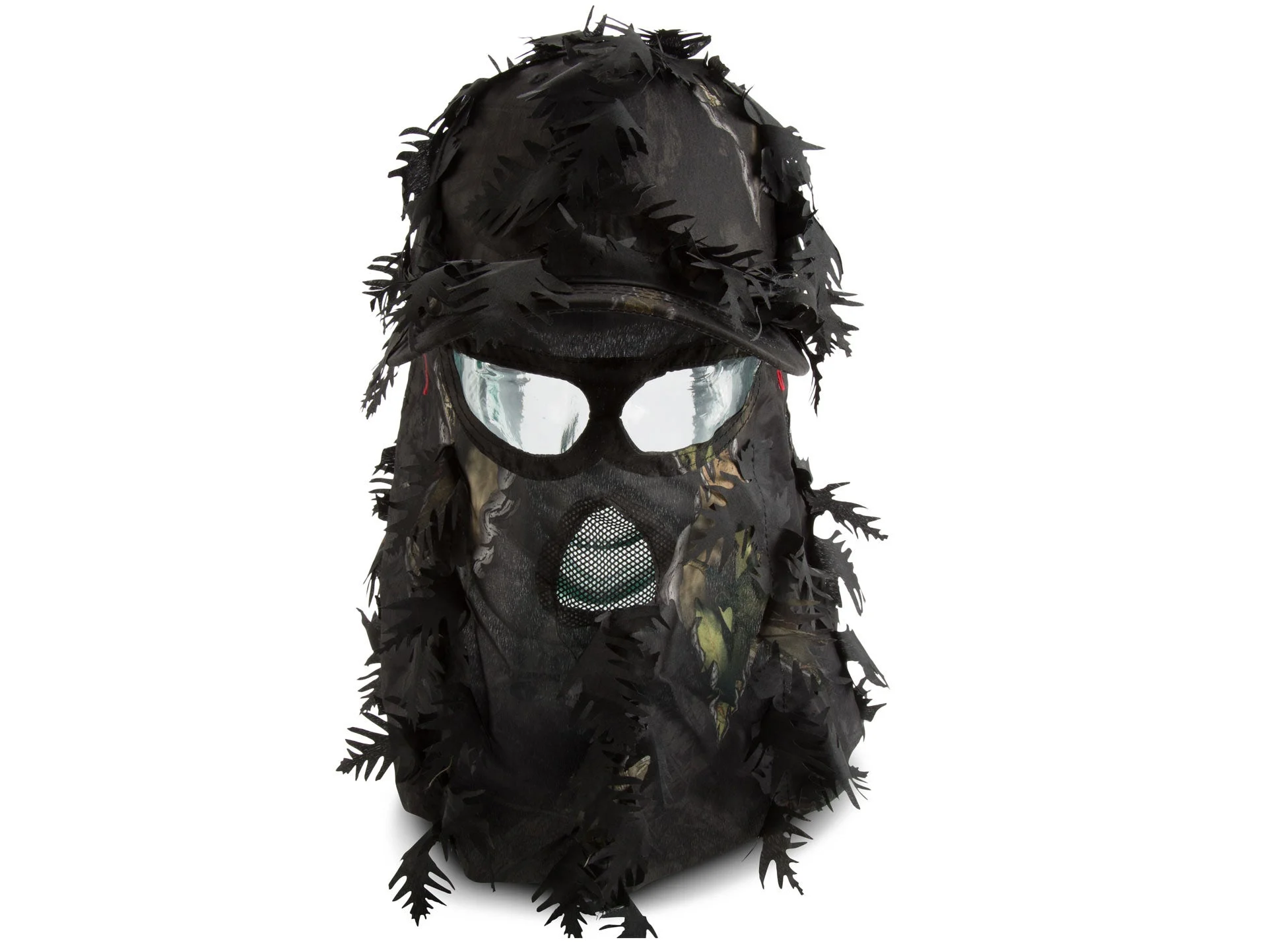
This full-coverage camo face mask will greatly reduce the chances of your shiny face spooking deer as they approach your shooting lane. Walmart
Few things spook deer—especially deer on high alert in close proximity to you—like your face. Just do this little experiment sometime: Send a buddy up to a tree stand, then walk toward the stand on whatever trail you anticipate deer will be using. Take a look and see if you see his shiny face up there, just asking to be noticed. Next, have him pull a camo face mask
on and do the same experiment. Fact is, the chances of you—or a deer—noticing him will fall dramatically with the face mask in use. Choose a mask that is comfortable and matches the weather where you’ll be hunting. In warm weather, a mesh mask is best, but when it’s colder, a solid one works better.
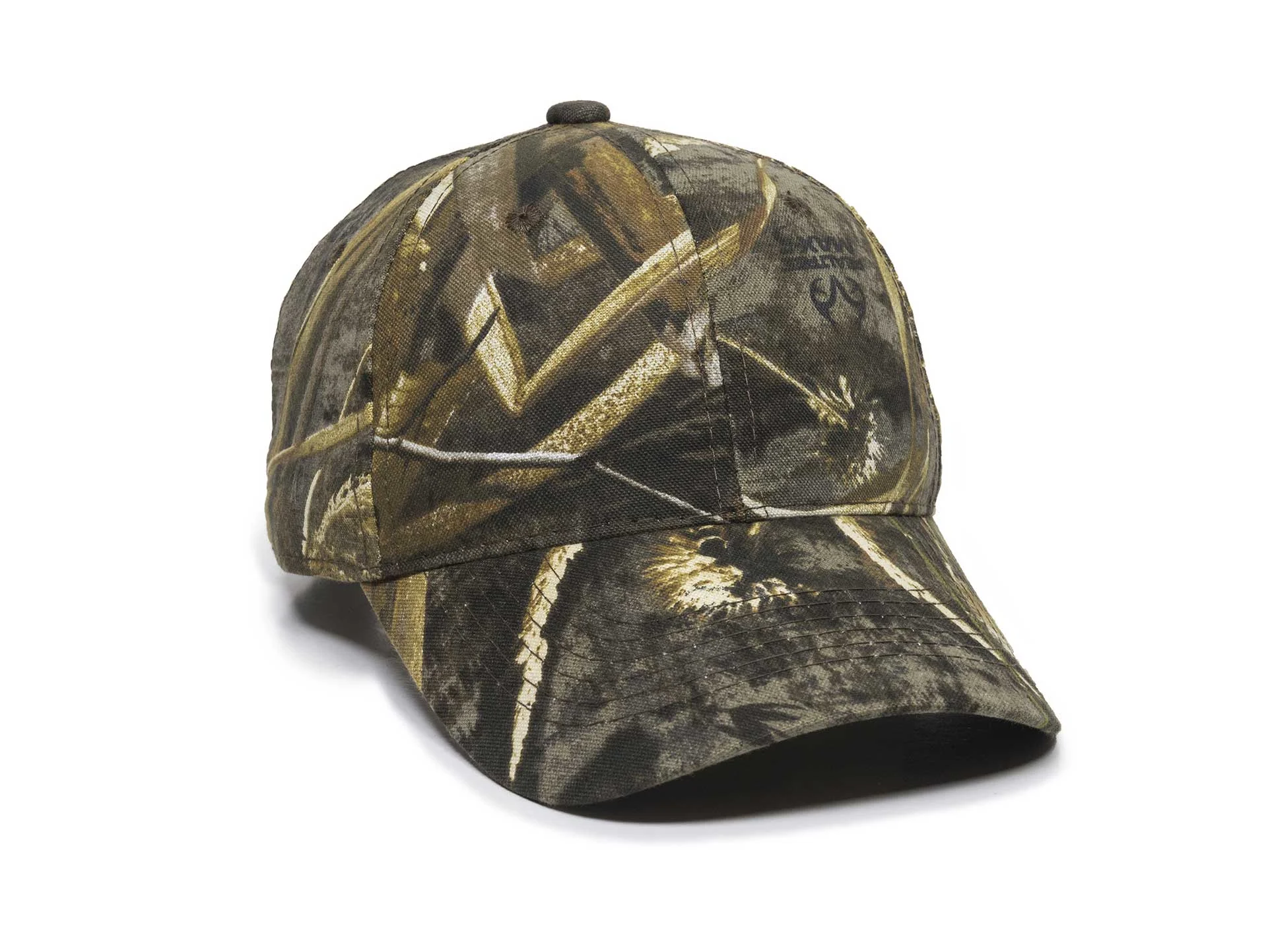
This simple camo cap does double duty of covering your hair and forehead for concealment and shading your eyes so you can pick out a deer in tough lighting conditions. Walmart
A good camouflage hat
is also necessary for anyone planning to get into deer hunting. Of course, in warm weather you’ll want a light hat, while in colder weather you might prefer a sock hat or other warmer hat. And your camo pattern, like with other clothing, should match the terrain and cover. Equally important is whether you choose a hat with a bill or without one. In some circumstances, especially when looking into the rising or setting sun, it’s nearly impossible to see a deer without a bill to shade your eyes. Even in colder weather when you might prefer a camo sock hat, having a billed hat to wear underneath it can mean the difference between success and failure.
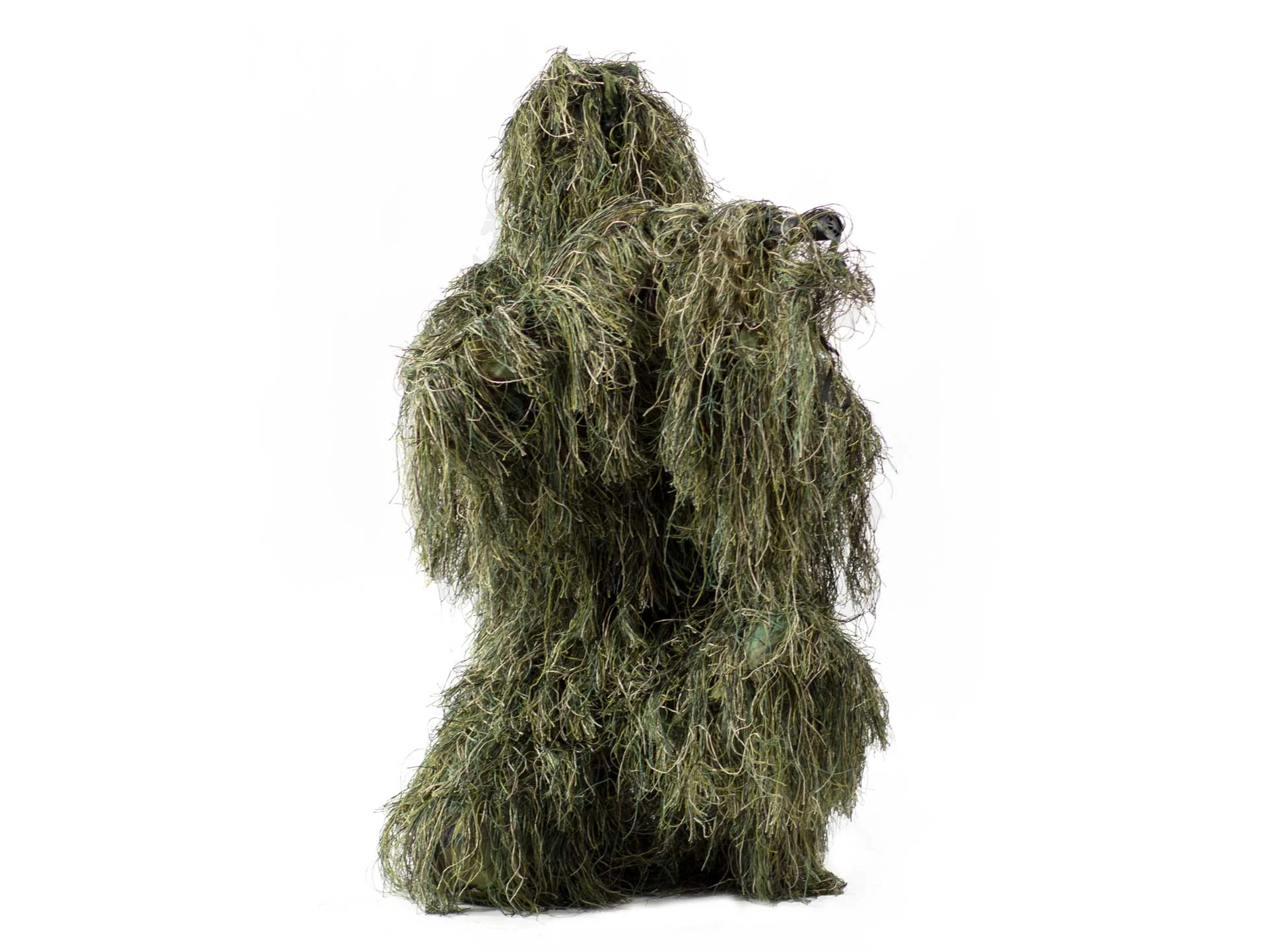
This ghillie suit in woodland camo can help you blend into your surrounds better than just about any other article of camouflage. Walmart
While not that popular nowadays, a good ghillie suit
can take the place of nearly every other item discussed so far. A ghillie suit will cover your lower body, torso, head, face and everything else, and many have 3-D type camo that so closely resembles foliage that you could walk right past someone wearing one without ever knowing it. That’s why they have been so popular with military snipers over the years. Note that ghillie suits tend to be hot, so if you plan to use one in warm weather, choose the lightest weight suit you can find. While not generally necessary when hunting from a tree stand, a good ghillie suit can provide ground hunters with enough concealment that they might not even need a blind.
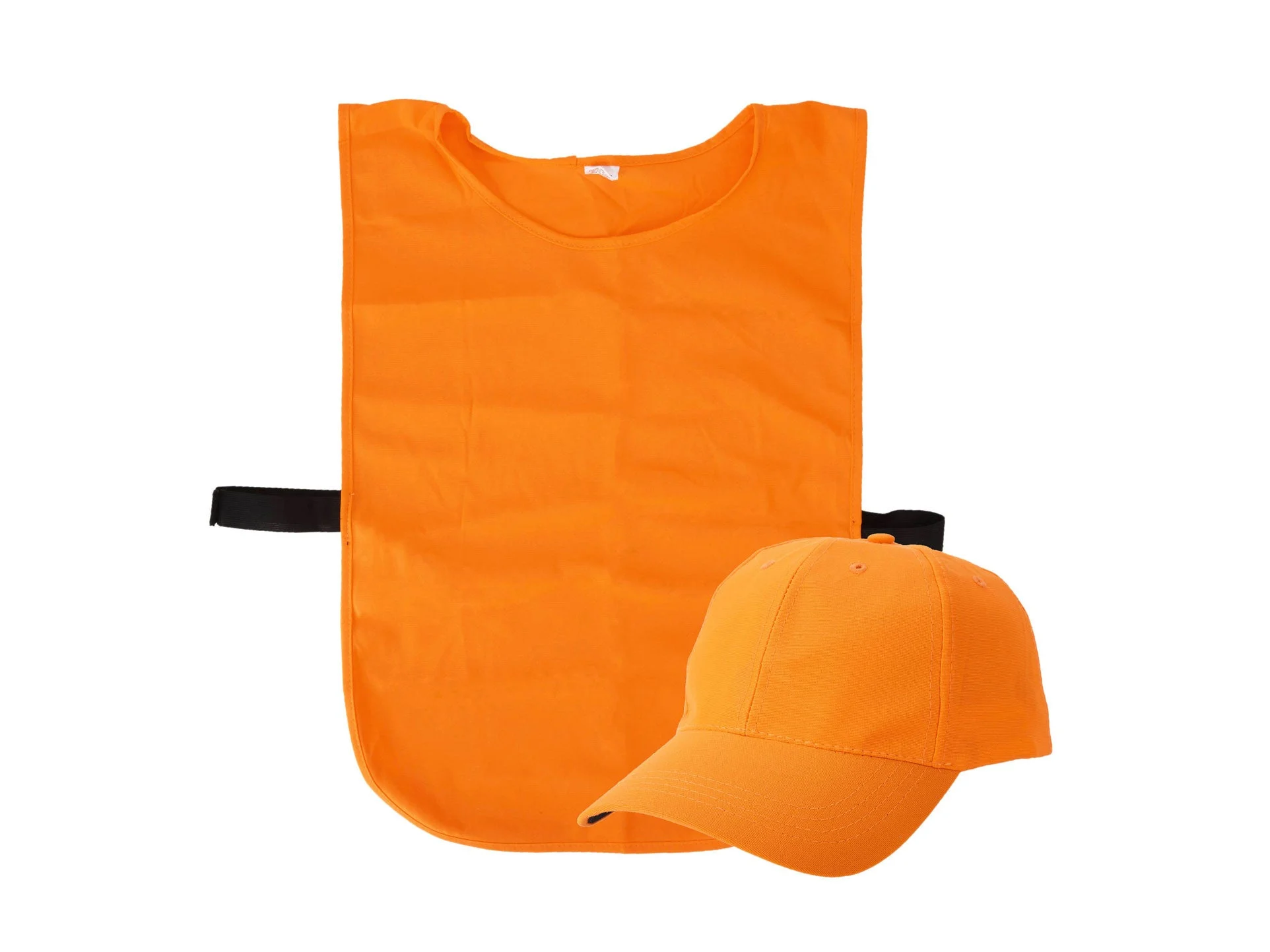
A simple blaze orange vest and hat like these can keep you legal—and safe—where hunter orange outer garments are required during certain seasons. Walmart
While this discussion is about camouflage, it would be remiss not to mention that many states require deer hunters to wear blaze orange garments during some firearm and muzzleloader seasons. Some require an upper garment of 400 to 500 square inches of orange, along with a hunter orange hat
or cap. Some allow camouflage blaze orange, while others do not. When orange is necessary, you can still wear your camouflage clothes, you’ll just need to slip the vest on over the top and replace your camo hat with an orange one. Always check your state hunting regulations before heading to your tree stand dressed in head-to-toe camo to ensure you are safe and legal.
Shop all hunting items at Walmart here
.





